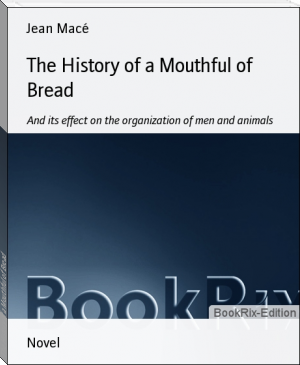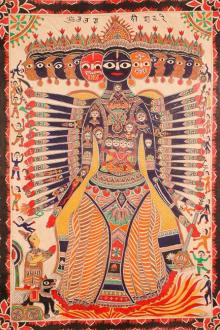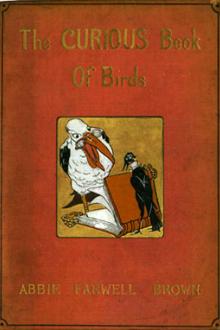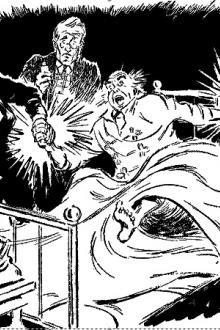The History of a Mouthful of Bread, Jean Macé [best autobiographies to read TXT] 📗

- Author: Jean Macé
Book online «The History of a Mouthful of Bread, Jean Macé [best autobiographies to read TXT] 📗». Author Jean Macé
vine trees. If you pursue him he is off like lightning for a second; then he stops suddenly short. You return to the charge, and he starts afresh, but only to stop again. At the fourth or fifth attack he is quite out of breath; you poke him with the stick with which you have been hunting him, but in vain; there he lies motionless, in spite of his alarm. A few steps have brought him to the end of his powers, like a man whose heart is diseased and who cannot go far. This, however, is a peculiarity common to all reptiles. Each of the three orders of which this third class of Vertebrata is composed has its own particular history besides. You must excuse my mentioning the barbarous names that have been given them, and allow me to call them tortoises , lizards , and serpents , like other people. The hard names mean no more than these; but they are Greek, which is always more imposing.
The slowness of the tortoise has passed into a proverb, which is not to be wondered at; for they cannot inhale the air, because their ribs (which are a reptile's only resource for breathing) are condemned to absolute immobility. The carapace , or shell, which the tortoise carries on his back, and under which it retreats upon the least alarm, as under a shield, is really formed of its ribs, each of which has widened itself so as to join on to its neighbor, like the boards of an inlaid floor, which run one into another. Of course there is no question of moving up and down with such ribs, and the poor bellows cannot work at all. How does the tortoise get out of this difficulty then, you will ask? I answer, it swallows air, as we should swallow a glass of water. You see its mouth open and then shut again, thereby taking in an actual mouthful of air, which the sides of the mouth, by contracting themselves, send straight to the lungs. These, which are very large, get filled in this way by degrees, and, when they are quite inflated, they expel the overplus by collapsing, like an over-stretched spring. You may imagine that this does not produce a very active respiration, and that a tortoise would be puzzled to run at even a moderate trot. To be sure, when he has once filled his great lungs with air, he has enough for a long time. Most tortoises are aquatic, and, as divers, leave the cetaceans far behind. Méry, an obscure French naturalist of the days of the Empire, pretended that he had kept in his house, for a month , some tortoises, whose breathing he had completely stopped. Only imagine from this how far their life must be below ours, although it is the result of similar actions, performed by organs which after all are copies (imperfect ones, it is true) of our own.
Some tortoises feed on vegetable substances, and some upon fish or small soft-bodied animals. Like birds, they mash their food with difficulty, by means of a real bill. Their jawbones are generally arched forward toward the front, and are furnished with sharp horny plates, in which a fairly-marked denticulation or notching may sometimes be traced, as in the bills of birds of prey. Indeed there is one, the
caretta , whose hooked and notched beak so completely recalls the warlike bill of a hawk, that it is usually known by the name of the "Hawk's-bill Turtle." You ought to know about this tortoise, for it is the one which furnishes tortoise-shell, that nice material which is so smooth to the touch, so pretty to look at, and so very fragile, that it seems only fit for the use of ladies' hands. I could hardly speak of tortoises without saying something of this one, out of whose back was carved the handle of your own pretty little penknife.
Behind this bill of the hawk's-bill there is a tongue, but of the character of a whale's tongue, and it is fastened underneath to the bottom of the mouth. At the base of it there is a sort of fleshy pad or cushion, which serves instead of a soft palate, that being another detail which is about to disappear from our history. We are now really entering upon the simplification of the digestive tube, which will, I forewarn you, end by being nothing more than a perfectly straight pipe, without any appendages whatever. In tortoises the intestine is still tolerably long, and is doubled up backwards and forwards many times in the abdomen; but it is already beginning to lose that variety of form which its different parts assumed in the higher animals. The large intestine can no longer be clearly distinguished from the smaller one, nor this from the stomach, which itself seems to be a continuation of the oesophagus, without any very distinct boundary line between them. The porter, who with us keeps the door of the stomach, does his duty here so badly, that there are certain kinds of tortoises whose oesophagus is covered with spines, the points inclined backward, to prevent the food from rising up into the mouth whilst the oesophagus is driving it down by its contractions.
In the gray lizards of our walls we find teeth again, but very different from any that we have hitherto seen. In the first place, they are not content with their usual place on the edge of the jaws, but encroach upon the surface of the palate, where they stretch out in close lines. Besides, they are even still less like teeth than the great nails in the jaws of the cetaceans. They are little ivory prongs, with the points turned inwards, analogous to the thorns of the oesophagus in the tortoise, and serve the lizard solely to retain and bruise his prey. He lives on insects, especially flies, which he seizes on the wing with the greatest skill, hastily catching and engulphing them in his open jaw; they pierce themselves on the little prongs, and are swallowed promiscuously. The tongue of the lizard has also a curious peculiarity, which is shared by that of the serpent: it is divided at the end into two threads, which dart in and out of its mouth, and by means of which it laps, like a dog, the few drops of water it requires to satisfy its thirst. I have seen lizards which had been tamed by children greedily sucking up the saliva from their lips by drawing across them those little forked tongues of theirs, which, after all, are very soft, and perfectly inoffensive.
The tongue of the chameleon, another species of lizard, is still more curious. You must know that the chameleon is a lumbering lazy animal, who feeds on flies and other swift insects, and who would, therefore, be constantly liable to go without his dinner but that his tongue serves him for a hunting weapon, like those of the wood-pecker and the ant-eater. When at rest, it is an oval spongy mass, lying comfortably in the mouth, with nothing formidable in its appearance; but let the prey come frisking round the chameleon, as if despising so helpless an enemy, and this great soft tongue is transformed into an active dart. It shoots forth like an arrow, and will sometimes seize the rash intruder at half a foot's distance, transferring it with equal rapidity to the motionless mouth. The blow is so soon struck, that it is very difficult to see how it all happens. Some say that the chameleon curves the tip of his tongue by a sudden effort, and then catches his flies with it, just as you would catch them with your hand. Others maintain (and this is the general opinion) that the tongue of the chameleon is terminated by a sort of sticky cushion, on which the flies are caught, like birds with birdlime. This singular dart is always out-jerked with such force that, if it strikes against a glass (the experiment has been tried with chameleons in captivity), it makes a sound as loud as that of a pea from a pea-shooter; so you may judge if it is not strong enough to stun a fly. Besides this, too, the chameleon (who is by-the-by, a hideous little beast) has given endless trouble to naturalists on another and very different point. It is he who is so celebrated for his faculty of changing color when any emotion agitates him; and ever since the days of Aristotle, who lived more than two thousand years ago, people have been trying to explain this, without any one being able to flatter himself that he has found out the exact answer to the riddle.
But there is a lizard more interesting still, and that is the crocodile. He stands alone among reptiles. His heart has two ventricles, and you would think that he ought to be included in the class of warm-blooded animals. But, no. The separation of the two kinds of blood takes place in the heart, it is true, and it is really true arterial blood which the aorta carries away from the left ventricle. But the right ventricle has two doors of exit. One communicates with the lungs, the other with the aorta; and the latter has hardly performed its distribution in the upper part of the body when it meets, as it descends, with a treacherous tube bringing to it a current of venous blood. In this way only half the blood that comes from the veins passes on to be regenerated by contact with the air, and all the hinder part of the body receives nothing but the mixed blood common to reptiles, while the head and fore members enjoy the privilege of the superior orders. After this go and lay down your laws of classification! Nature, while maintaining amongst all animals the same principle of life-the regeneration of the blood by oxygen-has in their construction followed many systems leading to the same result by different combinations, and which seem to permit the establishment of essential distinctions among them. Here is an animal who, if I may so express myself, is climbing up from one system to the other, and you would have to cut him in two before you could classify him properly, since his fore-quarters have risen to the warm-blooded animals, while his hind ones are left behind among the cold-blooded reptiles!
But there is something which even outdoes this.
On dry land the crocodile is timid, faltering, a bad walker, incapable of regular combat, and a man can manage him with a stick. One feels that he is betrayed by the hinder half of his body, through which circulates the only half-oxygenized blood. But when once he has plunged into the water his whole behavior suddenly alters; he is a ferocious being, high-mettled, indomitable, a savage enemy, redoubling his exertions, as if the entire mass of his blood had suddenly become arterial. Geoffroy St. Hilaire, who followed Bonaparte as a scientific explorer when he set out for the conquest of Egypt, the country of crocodiles, was deeply struck by studying on the spot this double life, which seems in a way to maintain two beings in the same body. He afterwards gave an extremely curious explanation of it in his work on the crocodiles of Egypt. Here it is; but I forewarn you that you will not understand it:
"The crocodile, when it is under water, receives by two canals into the cavity of the abdomen, a considerable quantity of water, which the animal can renew at will."
You are not much the wiser, are you? But wait a moment. We are soon coming to the fishes, and you will then see what an unlimited scope nature has allowed
The slowness of the tortoise has passed into a proverb, which is not to be wondered at; for they cannot inhale the air, because their ribs (which are a reptile's only resource for breathing) are condemned to absolute immobility. The carapace , or shell, which the tortoise carries on his back, and under which it retreats upon the least alarm, as under a shield, is really formed of its ribs, each of which has widened itself so as to join on to its neighbor, like the boards of an inlaid floor, which run one into another. Of course there is no question of moving up and down with such ribs, and the poor bellows cannot work at all. How does the tortoise get out of this difficulty then, you will ask? I answer, it swallows air, as we should swallow a glass of water. You see its mouth open and then shut again, thereby taking in an actual mouthful of air, which the sides of the mouth, by contracting themselves, send straight to the lungs. These, which are very large, get filled in this way by degrees, and, when they are quite inflated, they expel the overplus by collapsing, like an over-stretched spring. You may imagine that this does not produce a very active respiration, and that a tortoise would be puzzled to run at even a moderate trot. To be sure, when he has once filled his great lungs with air, he has enough for a long time. Most tortoises are aquatic, and, as divers, leave the cetaceans far behind. Méry, an obscure French naturalist of the days of the Empire, pretended that he had kept in his house, for a month , some tortoises, whose breathing he had completely stopped. Only imagine from this how far their life must be below ours, although it is the result of similar actions, performed by organs which after all are copies (imperfect ones, it is true) of our own.
Some tortoises feed on vegetable substances, and some upon fish or small soft-bodied animals. Like birds, they mash their food with difficulty, by means of a real bill. Their jawbones are generally arched forward toward the front, and are furnished with sharp horny plates, in which a fairly-marked denticulation or notching may sometimes be traced, as in the bills of birds of prey. Indeed there is one, the
caretta , whose hooked and notched beak so completely recalls the warlike bill of a hawk, that it is usually known by the name of the "Hawk's-bill Turtle." You ought to know about this tortoise, for it is the one which furnishes tortoise-shell, that nice material which is so smooth to the touch, so pretty to look at, and so very fragile, that it seems only fit for the use of ladies' hands. I could hardly speak of tortoises without saying something of this one, out of whose back was carved the handle of your own pretty little penknife.
Behind this bill of the hawk's-bill there is a tongue, but of the character of a whale's tongue, and it is fastened underneath to the bottom of the mouth. At the base of it there is a sort of fleshy pad or cushion, which serves instead of a soft palate, that being another detail which is about to disappear from our history. We are now really entering upon the simplification of the digestive tube, which will, I forewarn you, end by being nothing more than a perfectly straight pipe, without any appendages whatever. In tortoises the intestine is still tolerably long, and is doubled up backwards and forwards many times in the abdomen; but it is already beginning to lose that variety of form which its different parts assumed in the higher animals. The large intestine can no longer be clearly distinguished from the smaller one, nor this from the stomach, which itself seems to be a continuation of the oesophagus, without any very distinct boundary line between them. The porter, who with us keeps the door of the stomach, does his duty here so badly, that there are certain kinds of tortoises whose oesophagus is covered with spines, the points inclined backward, to prevent the food from rising up into the mouth whilst the oesophagus is driving it down by its contractions.
In the gray lizards of our walls we find teeth again, but very different from any that we have hitherto seen. In the first place, they are not content with their usual place on the edge of the jaws, but encroach upon the surface of the palate, where they stretch out in close lines. Besides, they are even still less like teeth than the great nails in the jaws of the cetaceans. They are little ivory prongs, with the points turned inwards, analogous to the thorns of the oesophagus in the tortoise, and serve the lizard solely to retain and bruise his prey. He lives on insects, especially flies, which he seizes on the wing with the greatest skill, hastily catching and engulphing them in his open jaw; they pierce themselves on the little prongs, and are swallowed promiscuously. The tongue of the lizard has also a curious peculiarity, which is shared by that of the serpent: it is divided at the end into two threads, which dart in and out of its mouth, and by means of which it laps, like a dog, the few drops of water it requires to satisfy its thirst. I have seen lizards which had been tamed by children greedily sucking up the saliva from their lips by drawing across them those little forked tongues of theirs, which, after all, are very soft, and perfectly inoffensive.
The tongue of the chameleon, another species of lizard, is still more curious. You must know that the chameleon is a lumbering lazy animal, who feeds on flies and other swift insects, and who would, therefore, be constantly liable to go without his dinner but that his tongue serves him for a hunting weapon, like those of the wood-pecker and the ant-eater. When at rest, it is an oval spongy mass, lying comfortably in the mouth, with nothing formidable in its appearance; but let the prey come frisking round the chameleon, as if despising so helpless an enemy, and this great soft tongue is transformed into an active dart. It shoots forth like an arrow, and will sometimes seize the rash intruder at half a foot's distance, transferring it with equal rapidity to the motionless mouth. The blow is so soon struck, that it is very difficult to see how it all happens. Some say that the chameleon curves the tip of his tongue by a sudden effort, and then catches his flies with it, just as you would catch them with your hand. Others maintain (and this is the general opinion) that the tongue of the chameleon is terminated by a sort of sticky cushion, on which the flies are caught, like birds with birdlime. This singular dart is always out-jerked with such force that, if it strikes against a glass (the experiment has been tried with chameleons in captivity), it makes a sound as loud as that of a pea from a pea-shooter; so you may judge if it is not strong enough to stun a fly. Besides this, too, the chameleon (who is by-the-by, a hideous little beast) has given endless trouble to naturalists on another and very different point. It is he who is so celebrated for his faculty of changing color when any emotion agitates him; and ever since the days of Aristotle, who lived more than two thousand years ago, people have been trying to explain this, without any one being able to flatter himself that he has found out the exact answer to the riddle.
But there is a lizard more interesting still, and that is the crocodile. He stands alone among reptiles. His heart has two ventricles, and you would think that he ought to be included in the class of warm-blooded animals. But, no. The separation of the two kinds of blood takes place in the heart, it is true, and it is really true arterial blood which the aorta carries away from the left ventricle. But the right ventricle has two doors of exit. One communicates with the lungs, the other with the aorta; and the latter has hardly performed its distribution in the upper part of the body when it meets, as it descends, with a treacherous tube bringing to it a current of venous blood. In this way only half the blood that comes from the veins passes on to be regenerated by contact with the air, and all the hinder part of the body receives nothing but the mixed blood common to reptiles, while the head and fore members enjoy the privilege of the superior orders. After this go and lay down your laws of classification! Nature, while maintaining amongst all animals the same principle of life-the regeneration of the blood by oxygen-has in their construction followed many systems leading to the same result by different combinations, and which seem to permit the establishment of essential distinctions among them. Here is an animal who, if I may so express myself, is climbing up from one system to the other, and you would have to cut him in two before you could classify him properly, since his fore-quarters have risen to the warm-blooded animals, while his hind ones are left behind among the cold-blooded reptiles!
But there is something which even outdoes this.
On dry land the crocodile is timid, faltering, a bad walker, incapable of regular combat, and a man can manage him with a stick. One feels that he is betrayed by the hinder half of his body, through which circulates the only half-oxygenized blood. But when once he has plunged into the water his whole behavior suddenly alters; he is a ferocious being, high-mettled, indomitable, a savage enemy, redoubling his exertions, as if the entire mass of his blood had suddenly become arterial. Geoffroy St. Hilaire, who followed Bonaparte as a scientific explorer when he set out for the conquest of Egypt, the country of crocodiles, was deeply struck by studying on the spot this double life, which seems in a way to maintain two beings in the same body. He afterwards gave an extremely curious explanation of it in his work on the crocodiles of Egypt. Here it is; but I forewarn you that you will not understand it:
"The crocodile, when it is under water, receives by two canals into the cavity of the abdomen, a considerable quantity of water, which the animal can renew at will."
You are not much the wiser, are you? But wait a moment. We are soon coming to the fishes, and you will then see what an unlimited scope nature has allowed
Free e-book «The History of a Mouthful of Bread, Jean Macé [best autobiographies to read TXT] 📗» - read online now
Similar e-books:





Comments (0)